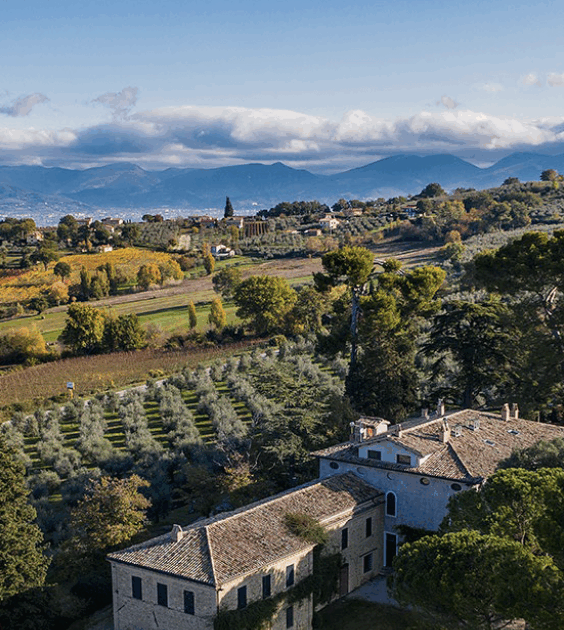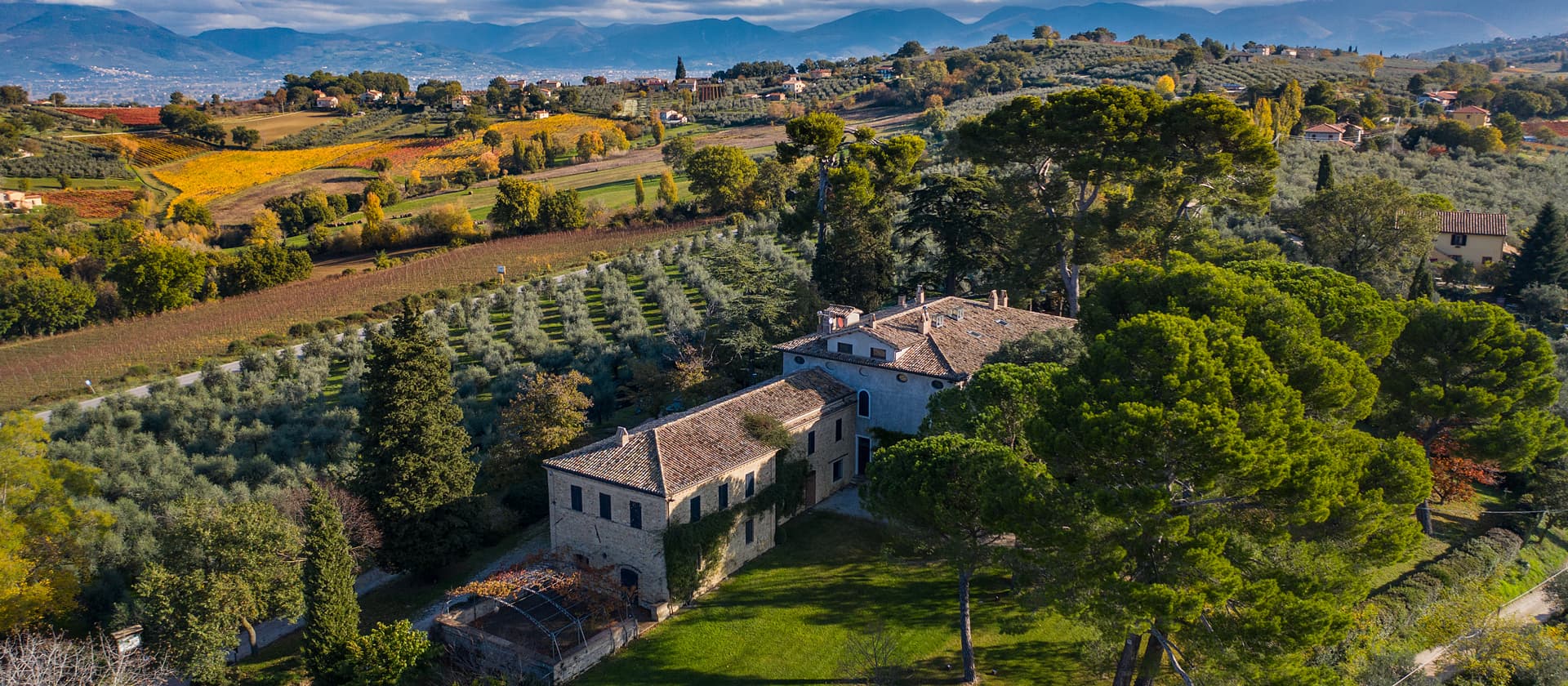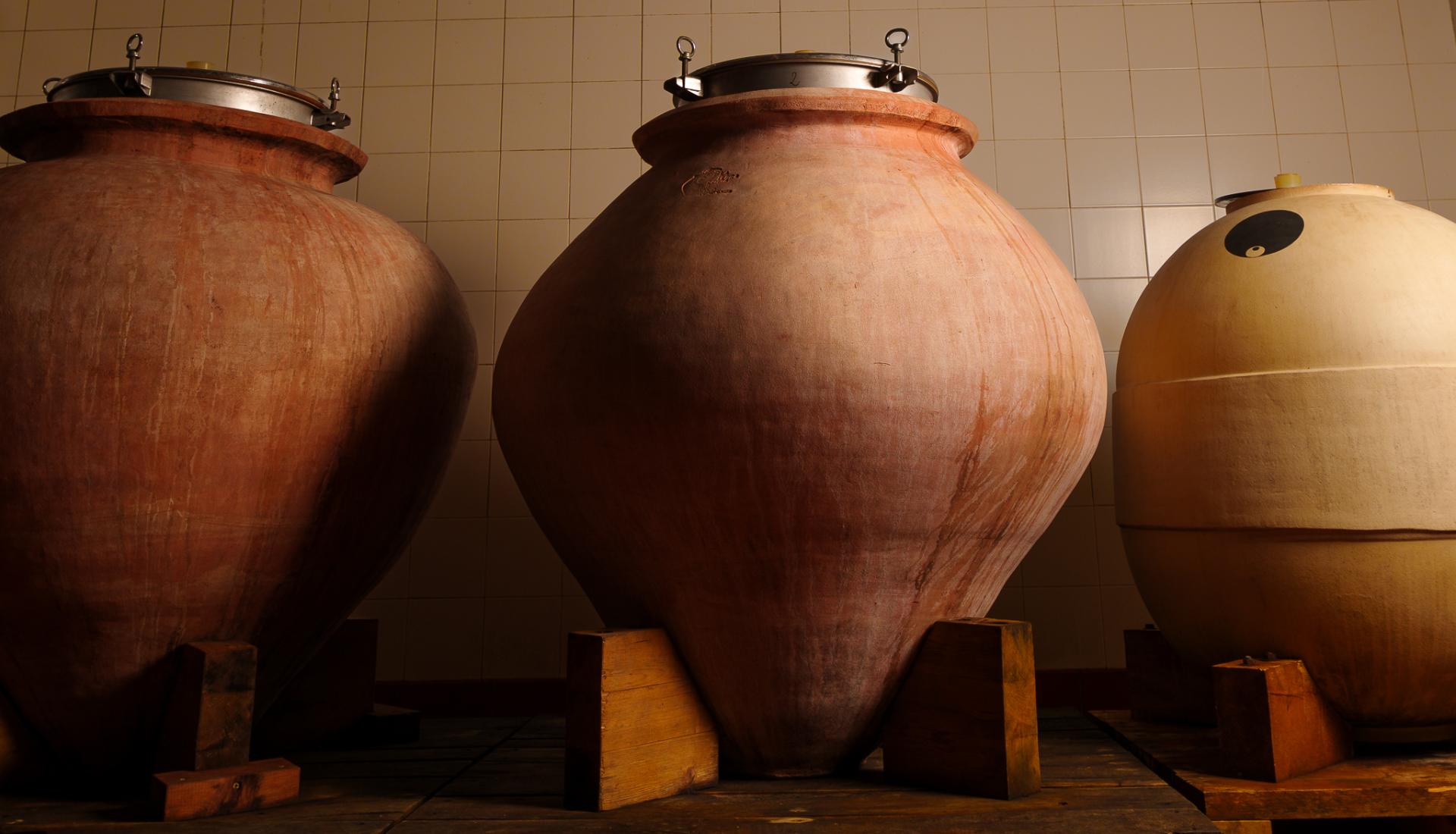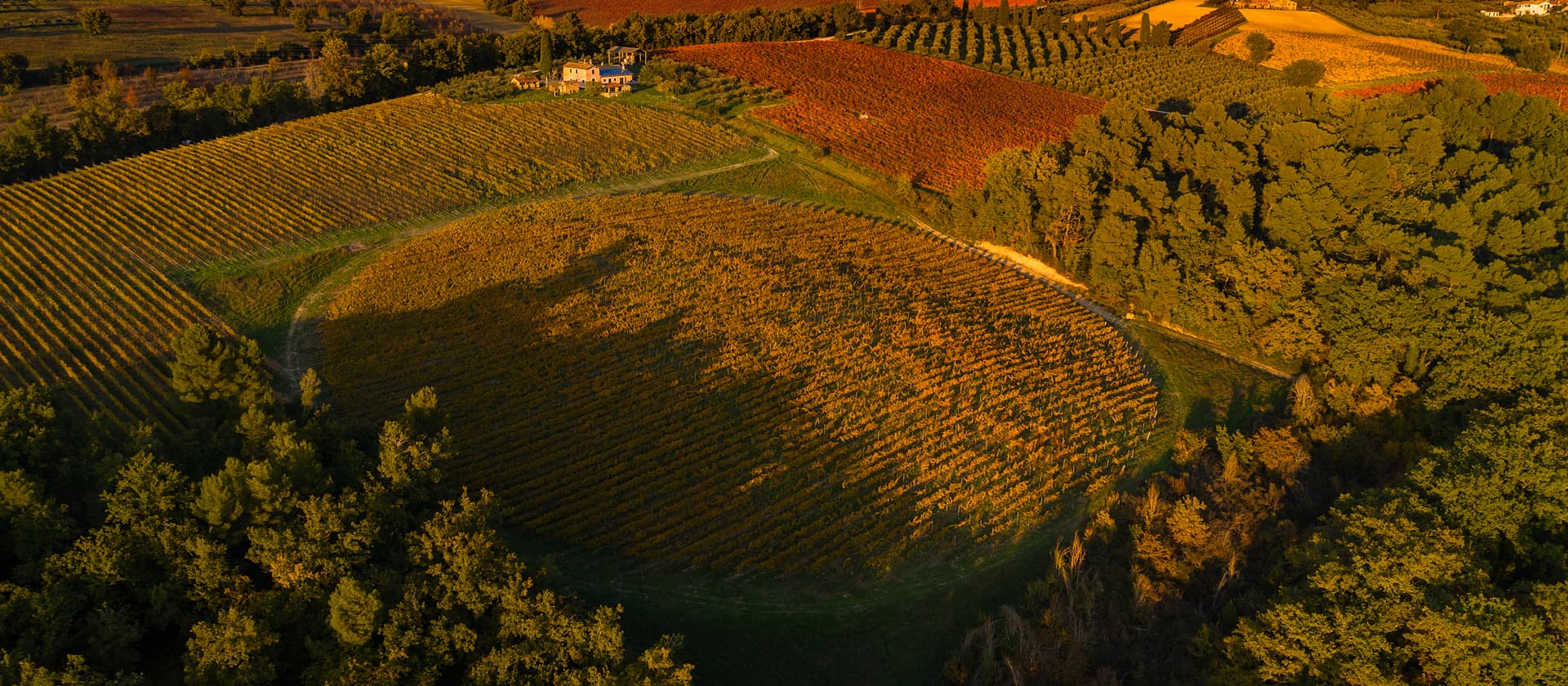
Antonelli San Marco
A historic umbrian winery redefining Trebbiano Spoletino
Nestled in the heart of Umbria’s region, Antonelli San Marco is one of Italy’s most storied wine estates. Family-owned since 1881 (or 1883, according to some records), the winery stands as a pillar of the Montefalco DOCG denomination, combining deep-rooted tradition with a forward-thinking, sustainable approach to viticulture.
Since 2009, Antonelli San Marco has embraced certified organic farming across its entire production. Today, the estate spans 190 hectares in a single, contiguous property, making it one of the largest and most cohesive agricultural holdings in the area. The landscape—rolling hills with clay-limestone soils of various geological origins, surrounded by oak forests—creates a microclimate ideal for vines and olive trees.
A Focus on native varieties and sustainable winemaking
Out of the estate’s total surface, approximately 60 hectares are dedicated to vineyards, primarily with south and west-facing exposures. These vineyards are planted with native grape varieties, including Grechetto and Trebbiano Spoletino for whites, and Sangiovese and the iconic Sagrantino for reds.
Sagrantino, a varietal native to Montefalco, is a cornerstone of the winery’s identity. Through precise vineyard zoning, Antonelli San Marco continues to explore its full potential in flagship wines like Montefalco Sagrantino DOCG, as well as single-vineyard selections such as “Chiusa di Pannone” and “Molino dell’Attone.”
The winery itself is entirely underground, located beneath the estate’s historic manor house. Built to operate using gravity-fed vinification—without mechanical pumping—it allows for low environmental impact and greater control during the early phases of fermentation and maceration. Only estate-grown grapes, all certified organic, are vinified on site.
The annual production reaches around 350,000 bottles.

Agricultural Ecosystem
Antonelli San Marco also dedicates 10–13 hectares to olive groves, producing two types of extra virgin olive oil. The estate raises free-range pigs for traditional cured meats and cultivates local legumes such as chickpeas. A Sagrantino grape pomace grappa rounds out the estate’s artisanal offerings.
Visitors can enjoy guided tours, tastings, lunches, and dinners, as well as participate in cooking classes and truffle hunts through the “Cucina in Cantina” experience. Plans are underway to offer guest accommodations in a redesigned facility immersed in vineyards and olive trees.
Since 1986, the estate has been managed by Filippo Antonelli, representing the fifth generation of the family. He is supported by enologists Massimiliano Caburazzi and Paolo Salvi, ensuring continuity and excellence in both vineyard and cellar.

Trebbiano Spoletino: the trio that defines a variety
Antonelli San Marco has long championed Trebbiano Spoletino, one of Umbria’s most intriguing indigenous grapes. Their latest project is a trio of wines that reveals the grape’s full expressive range, crafted with precision, organic farming, and a deep respect for terroir:
Trebbiano Spoletino Spumante Spoleto DOC 2021 Dosaggio Zero
A sparkling wine of elegance and identity, this is made from 100% Trebbiano Spoletino using the traditional method. It spends three years on the lees, developing fine bubbles, layered complexity, and a crisp, mineral-driven finish. The zero dosage approach enhances the natural purity of the fruit, making it one of Central Italy’s most compelling méthode traditionnelle expressions.

Trebium Trebbiano Spoletino Spoleto DOC 2024
The 2024 vintage reinforces Trebium as a reference point for still Trebbiano Spoletino. With citrus lift, saline tension, and aromatic depth, this white wine speaks clearly of place, biodiversity, and a well-defined stylistic vision shaped by decades of careful work in the vineyard and cellar.
Vigna Tonda Trebbiano Spoletino Spoleto DOC 2023
Sourced from a historic circular vineyard first mapped in 1902, recently replanted in its original form, this wine undergoes spontaneous fermentation on the skins in terracotta and ceramic amphorae, without temperature control. The result is a textured, complex wine made from massal-selected vines descended from old stocks once trained on maple trees. Hand-harvested in mid-October, Vigna Tonda expresses the full character of its hillside site (350m a.s.l.), offering exceptional structure and identity.



